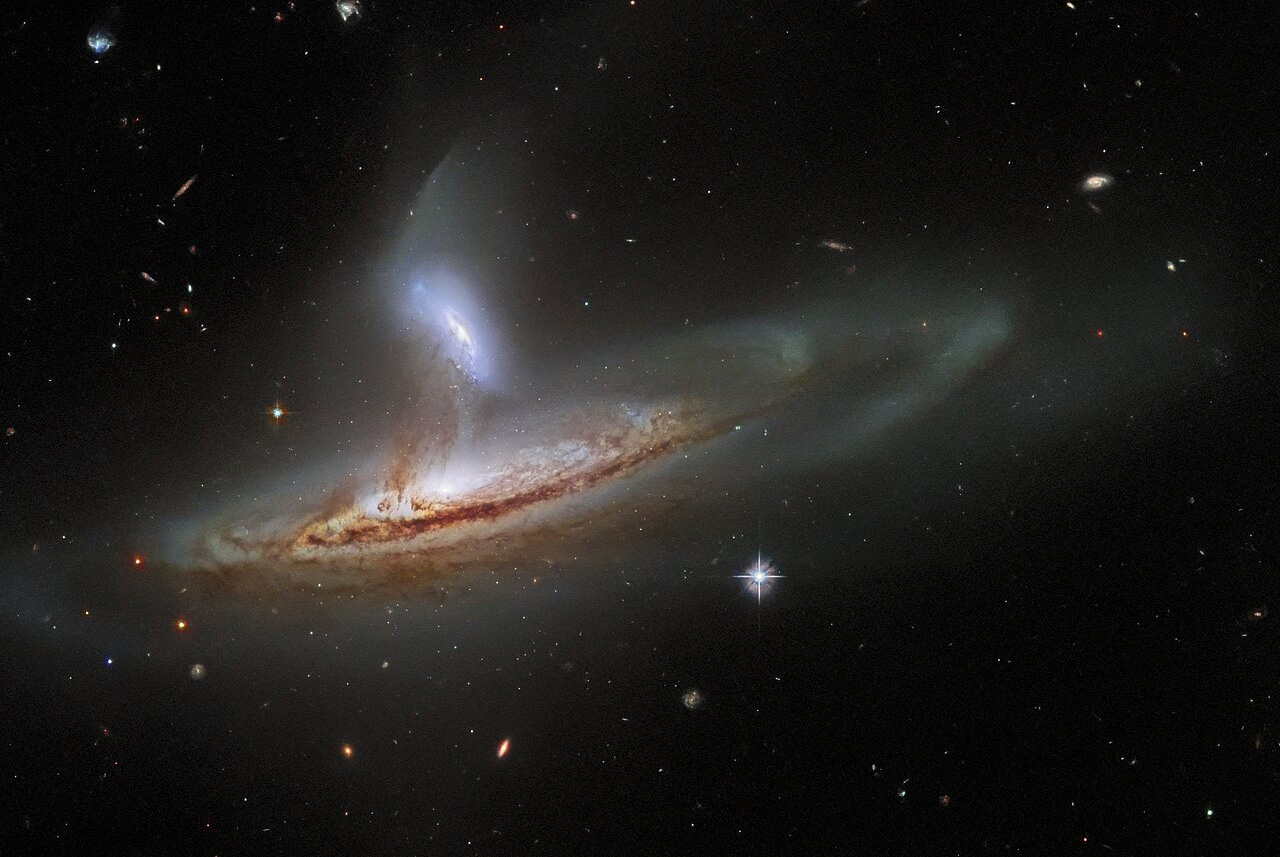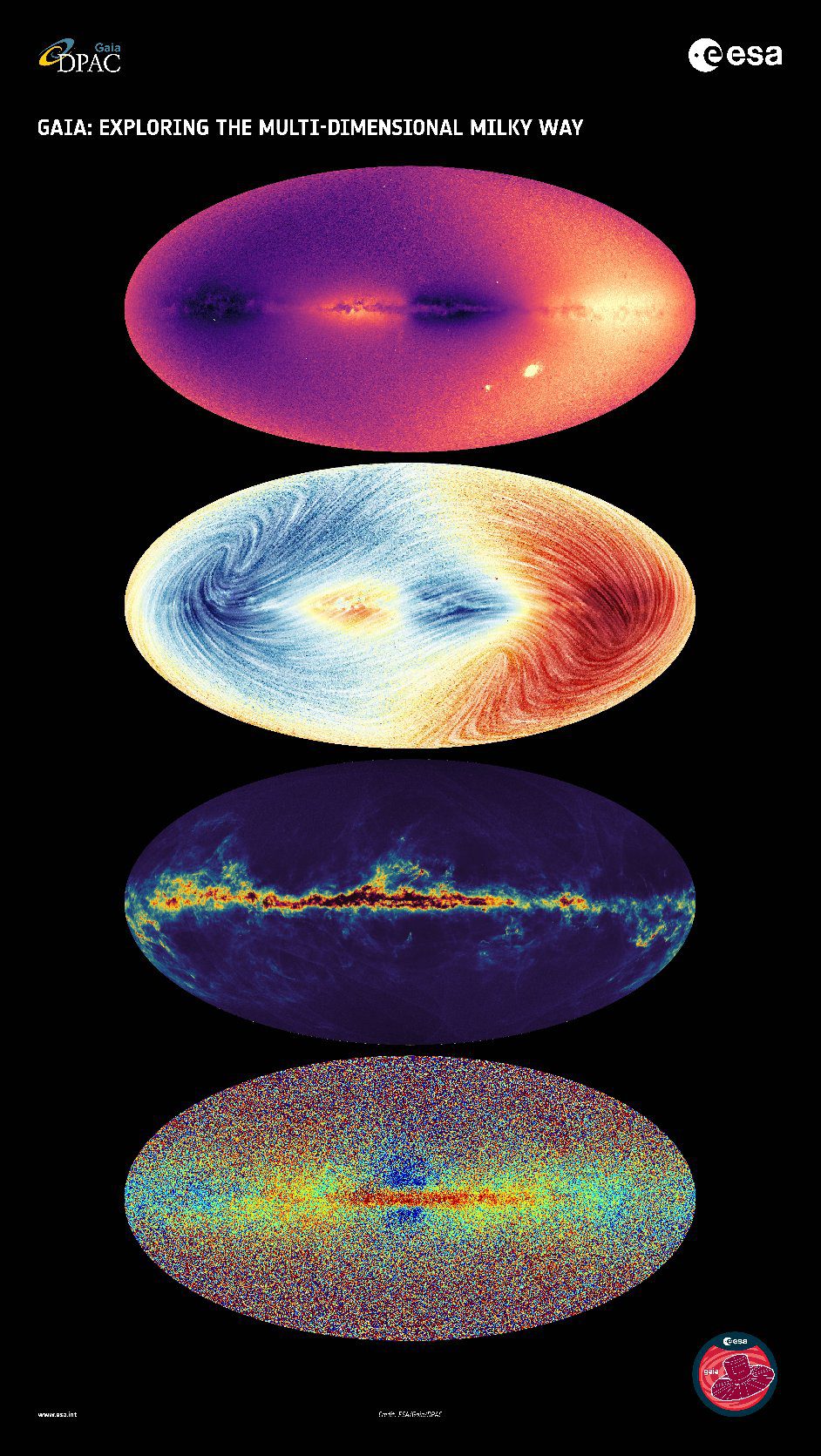The most detailed map of the Milky Way to date, which includes information about nearly two billion stars, was revealed on Monday. In the third catalog of the European Space Agency’s (ESA) Gaia probe, astronomers, including Hungarian researchers, present fascinating discoveries from the vibrations of strange stars, the “DNA” of stars and the youngest dead-born stars to the sun’s asteroids. System, ELKH Books. Center for Astronomy and Earth Sciences Research (CSFK) based on ESA Communications.
As noted, the mission of the Gaia spacecraft, launched in 2013, aims to produce an accurate and complete multidimensional map of the Milky Way. This will allow astronomers to reconstruct the structure and evolution of our galaxy over the past billions and better understand the life cycle of stars and our place in the universe.
Previous spacecraft measurements determined the motion of stars in our galaxy. The third and final edition of Gaia (Data version 3) contains new and more accurate information about nearly two billion stars in the galaxy.
The catalog contains new data such as chemical composition, temperature, colour, mass, age and radial velocity of stars. Much of this information has been revealed using newly published spectroscopic data. It is a technique by which starlight, like a rainbow, is decomposed into the colors of the Creator.
The data also includes subsets of special stars, such as those whose brightness changes over time: these are called variable stars.
The latest measurements have unexpectedly revealed thousands of stellar tremors, tiny movements on the surface of stars that change the shape of stars.
Previously, Gaia had already found radial oscillations under which the stars periodically contract and contract while retaining their spherical shape. However, Gaia has now detected other vibrations akin to a large-scale tsunami. These non-radial vibrations slightly alter the star’s shape, making it difficult to notice.
“The vibrations of the stars tell us a lot about the stars, especially about their inner workings. Gaia will be a goldmine in terms of stellar seismology for massive starsThe ESA statement quotes Connie Aerts, professor in the Gaia Scientific Collaboration at the University of Leuven in Belgium.
According to the announcement, what the stars are made of can tell us a lot about the place of their birth and subsequent flight, and, accordingly, the history of the Milky Way. With this release, Gaia reveals the largest chemical map of the galaxy, from the circumference of our sun to the smaller galaxies around us, linked to the 3D motion of the stars.
With the help of Gaia, it can be seen that in the Milky Way, some stars consisted of ancient material that arose at the birth of the universe, while others, like our Sun, were already formed from material enriched by previous generations of stars. . The stars closest to the center of the disk of our galaxy are richer in minerals than the distant stars. Gaia was also able to originally identify stars from other galaxies based on their chemical composition.
In addition, the new catalog of binary stars shows the mass and evolution of more than 800,000 binary star systems, while a new asteroid survey of 156,000 small celestial bodies contributes to the discovery of the origin of the Solar System. Gaia has also revealed new information about 10 million variable stars, mysterious large interstellar particles, and galaxies and quasars outside our cosmic ocean.
According to CSFK, Hungarian researchers have also been involved in the search for and identification of variable stars. In the third data release, the identification of young stars was led by Gabor Marton, an employee of the CSFK’s Astronomical Institute.
Gaia sees young stars in a state where there is already a planet-forming disk around them, and even planetary germs have already appeared on this disk. “In addition to blocking the light of their parent star, which was also observed by Gaia, these very young planets can interact in other ways that also lead to marked changes in the brightness of space telescope systems. Because Gaia “looks” at these light sources, Gabor Marton explained in the CSFK statement For a long time, at regular intervals, they are also excellent for observing rare but dangerous events.
The astronomer explains that a more detailed analysis of luminosity changes can reveal how different distant solar systems form around stars, how the orbits of planets evolve, and how interstellar dust particles turn into the complex material that makes up comets, asteroids and planets.












































